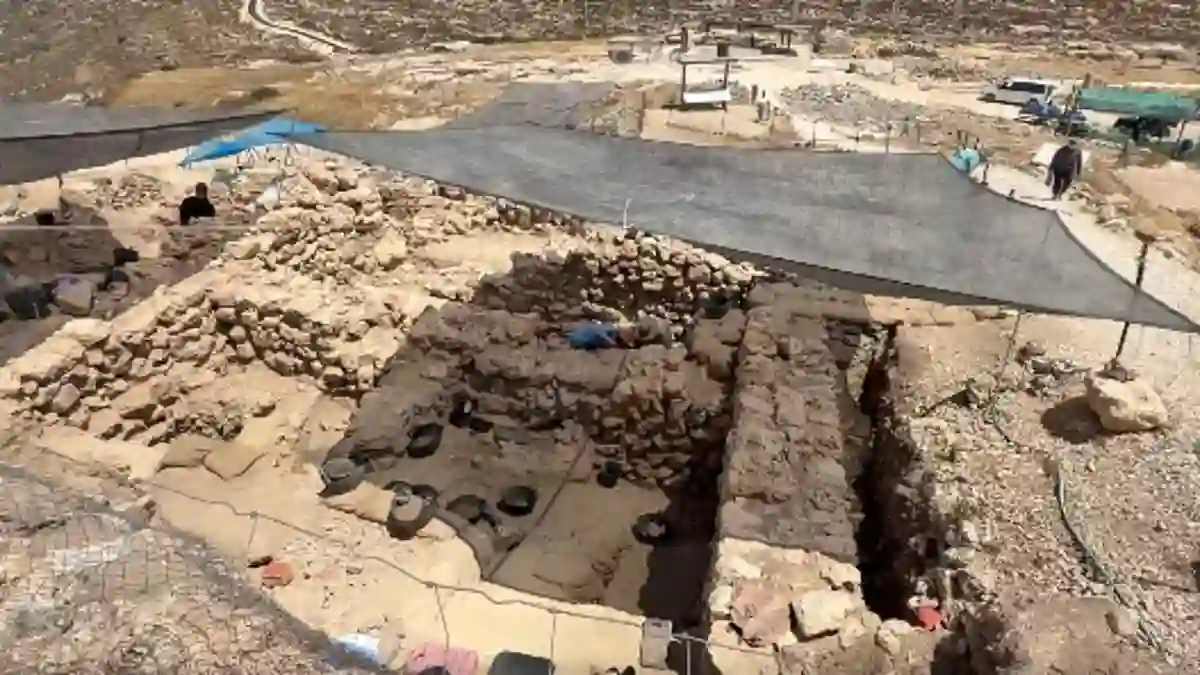It’s one of the greatest biblical mysteries of all time — what happened to the Ark of the Covenant? That sacred gold-covered chest said to contain the Ten Commandments vanished from history over 2,500 years ago.
But now, a new discovery in Israel has archaeologists buzzing with excitement and raising some pretty bold questions.
A Monumental Find in Shiloh
At the ancient site of Shiloh in Israel, a team of archaeologists may have just found something extraordinary.
They’ve unearthed a large stone structure that seems to match the biblical description of the Tabernacle — the portable sanctuary the Israelites used to house the Ark during their wilderness years.
Dr. Scott Stripling, the director of the dig at Tel Shiloh, says the building they’ve found is no ordinary ruin.
“We’ve uncovered a monumental building from the Iron I period that matches the biblical dimensions of the Tabernacle,” he explained.
The structure is oriented east to west and is laid out in a 2:1 ratio — just like the one described in scripture.
Evidence of Ancient Worship Practices
But it’s not just the architecture that’s grabbing attention.
The team has found over 100,000 animal bones, mostly from the right side of sheep, goats, and cattle.
Why does that matter? Because Leviticus 7 specifically mentions that the right side of sacrificial animals was reserved for priestly offerings.
“This isn’t a coincidence,” said Dr. Stripling in an interview with the Christian Broadcasting Network.
“The amount of sacrificial evidence here is overwhelming, and it lines up with the biblical record in a way that’s hard to ignore.”
Pottery and Bones Add to the Timeline
Alongside the bones, the team also discovered pottery that dates back to the same time period.
This further supports the idea that the site was used during the era when the Tabernacle was active — a time the Bible says spanned almost 400 years, long before the grand Temple was built in Jerusalem.
Shiloh’s Central Role in Ancient Israel
According to the Bible, Shiloh wasn’t just another settlement — it was Israel’s first major religious hub.
It was here that Eli, a high priest, presided over the Tabernacle during a critical chapter in Israel’s history.
The Book of 1 Samuel tells the story of a desperate moment when the Israelites, facing defeat by the Philistines, brought the Ark into battle, hoping it would bring them divine victory. Instead, the plan went tragically wrong.
The Ark was captured, and Eli’s sons, Hophni and Phinehas, were killed in the fighting.
The Gate Where Eli Died?
The heartbreak didn’t end there. When a messenger brought news of the defeat back to Shiloh, Eli — then 98 years old and nearly blind — was waiting at the city gate.
Upon hearing that the Ark had been taken, he fell from his seat, broke his neck, and died.
Scripture highlights the moment by stating that Eli had judged Israel for forty years.
Now, Dr. Stripling believes his team may have uncovered that very gate where Eli died — a find that would bring this biblical moment hauntingly to life.
A Sacred Space with Divine Warning
There’s more. The newly uncovered building includes a large inner wall, dividing the space into two distinct areas.
This setup mirrors the biblical description of the Tabernacle, where the Most Holy Place — also called the Holy of Holies — was separated by a veil.
According to Exodus 26, that inner room housed the Ark of the Covenant and was considered the earthly dwelling of God’s presence.
It was so sacred, in fact, that even entering it at the wrong time could be deadly.
Leviticus 16:2 puts it bluntly: “The Lord said to Moses, ‘Tell Aaron your brother not to come at any time into the Holy Place inside the veil, before the mercy seat that is on the ark, so that he may not die.’”
Mishandling the Ark Came with Consequences
That level of reverence carried into other scriptures as well.
In 2 Samuel 6, we’re told that simply touching the Ark — or even looking inside — could result in death. The Ark wasn’t just a religious artifact.
It was believed to contain the presence of God, and mishandling it was seen as a serious offense.
Still a Mystery, But the Clues Keep Coming
The exact fate of the Ark remains unknown. It disappeared from the biblical record sometime before the Babylonians sacked Jerusalem in 586 BC.
But this new discovery at Shiloh is reigniting interest in its story — and raising new hopes that we may one day get closer to solving the mystery.
